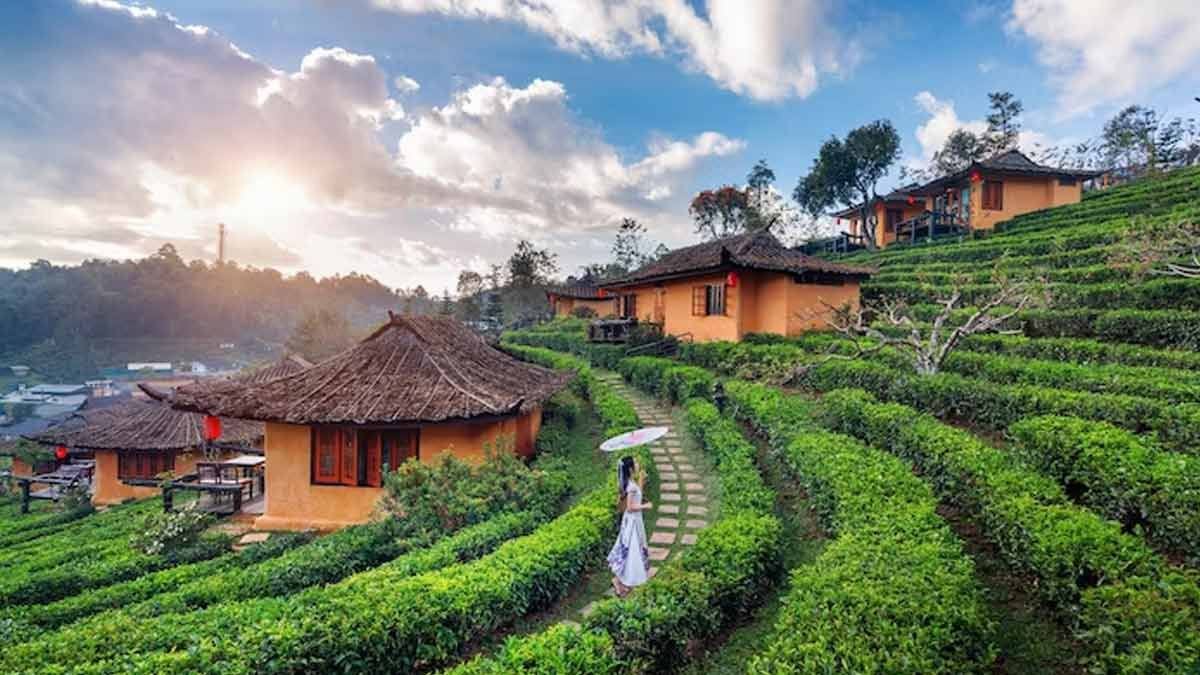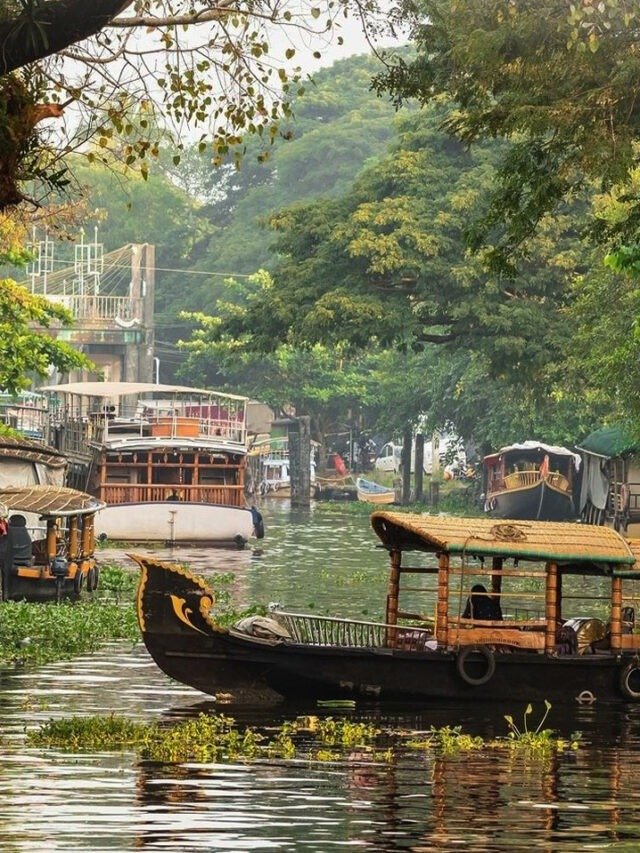By: Dr. Aniruddha Babar
As I gaze upon the unfolding reality of the Frontier Naga Territory, I find myself captivated by the profound potential it holds. In this vast expanse of land, where history and tradition intertwine with the promise of a new dawn, I feel an inexplicable sense of connectedness. It is as if the very fabric of existence whispers its secrets to me, inviting me to delve into the depths of my own intuition and imagination. In this moment, I embrace the role of a visionary, a philosopher, a dreamer and also a role of a ‘Realist’ and ‘Analyst’.
The Frontier Naga Territory, with its diverse landscapes and vibrant cultures, serves as a canvas upon which the future unfolds. I see a future where the wounds of the past are gradually healed, where the marginalized communities that have suffered for far too long rise up, empowered and emboldened. It is a future built upon the pillars of social justice and equity, where the principles of fairness and equality permeate every aspect of society. I envision a society where every individual, regardless of their background or circumstances, is given the opportunity to thrive and contribute meaningfully.
As I peer into the future of the Frontier Naga Territory, I witness the emergence of a model for sustainable development, one that harmonizes with the natural environment rather than exploiting it. It is a future where the abundant resources of the region are harnessed responsibly, guided by a deep respect for Mother Nature. In this vision, eco-friendly practices flourish, renewable energy sources power vibrant communities, and sustainable agriculture nurtures both the land and its inhabitants. The Frontier Naga Territory becomes a shining example to the world, demonstrating that progress need not come at the expense of our planet.
In the tapestry of my imagination, I see a society where education is not merely a privilege, but a fundamental right bestowed upon every individual. The future of the Frontier Naga Territory is one where knowledge flows freely, where educational institutions become fertile grounds for curiosity, creativity, and critical thinking. As the youth of the region embrace learning, they become the catalysts for transformation, shaping a future that transcends boundaries and embraces innovation. Through education, they become the architects of a society that cherishes wisdom, embraces diversity, and thrives on the power of collective intelligence.
Yet, as I peer into the depths of this envisioned future, I recognize that its realization is not without challenges. The road ahead is marked by obstacles and uncertainties, requiring resilience, determination, and unwavering belief. It calls upon the leaders of today and tomorrow to rise above personal interests, individualistic nature, and tribal mentality and embrace a vision that encompasses the greater good. It demands a collective effort, where collaboration and cooperation replace division and conflict. The journey to the future of the Frontier Naga Territory is not a solitary one but a shared endeavor, where the dreams of each individual intertwine to weave a tapestry of progress.
In this moment of contemplation and foresight, I am filled with a profound sense of hope. The Frontier Naga Territory stands at the cusp of its destiny, a future awaiting its realization. It beckons us to become the custodians of change, to shape a reality that is inclusive, sustainable, and bright. It is a future that relies on the power of imagination, fueled by the belief that our dreams have the ability to transcend the boundaries of the present and shape the course of history. As I delve into the realm of the possible, I am reminded that the future is not preordained, but a tapestry waiting to be woven, guided by our collective vision, determination, and unwavering faith in the potential of the Frontier Naga Territory- a soon to be born child of ‘Mother India’.
The development of an upcoming Frontier Naga territory requires careful consideration of economic models that can effectively stimulate growth and address the unique challenges faced by the region. In the case of the Frontier Naga Territory, a comprehensive analysis suggests that a hybrid economic model combining elements of both market-oriented capitalism and inclusive development policies to ensure sustainable development, social growth and social justice would be the most suitable approach.
However, it is essential to ensure that the benefits of economic growth are distributed inclusively among all segments of society, considering the unique socio-cultural context of the Frontier Naga Territory. Inclusive development policies should be implemented to address the historical marginalization and socio-economic disparities faced by certain communities within the region. This requires a focus on poverty reduction, social welfare programs, and targeted interventions to uplift marginalized groups.
The Frontier Naga Territory, a region with immense potential for economic development and social progress, requires a carefully designed economic model to drive its growth and ensure social justice. As this territory prepares to emerge as a key player in the global economy, it is essential to adopt an economic model that balances economic growth with equitable distribution of resources and opportunities. In this article, we will analyze the best economic model for the Frontier Naga Territory, taking into account its unique characteristics and the goal of achieving sustainable development, constitutional equity and social justice.
One of the most promising economic models for the Frontier Naga Territory is the inclusive growth model. This model emphasizes broad-based development that benefits all segments of society, particularly marginalized groups and regions. Inclusivity is crucial for the Frontier Naga Territory, which has historically faced socio-economic disparities and imbalances due to apathy exhibited by the state government of Nagaland and its fractured governance. By prioritizing inclusivity, the economic model can address these disparities and ensure that economic growth is not concentrated in a few hands, but rather shared by all-respecting the Constitutional mandate.
To achieve inclusive growth, the economic model for the Frontier Naga Territory should focus on creating an enabling environment for entrepreneurship and innovation. This involves facilitating access to capital, promoting skills development, and providing business support services. By empowering individuals and communities to participate in economic activities, the model can foster economic diversification and reduce dependency on a few industries or sectors. This approach will help create a more resilient and sustainable economy that can withstand external shocks and promote long-term growth.
Furthermore, the economic model for the Frontier Naga Territory should prioritize investments in infrastructure development. Adequate infrastructure is a prerequisite for economic growth and social development. Improved transportation networks, reliable energy supply, and modern telecommunications systems are essential for attracting investments, facilitating trade, and connecting remote areas to urban centers. By investing in infrastructure, the economic model can bridge the geographical divide and ensure that all regions within the Frontier Naga Territory have access to opportunities for economic development.
In addition to inclusive growth and infrastructure development, the economic model should also consider environmental sustainability. The Frontier Naga Territory is known for its rich biodiversity and natural resources. Therefore, it is crucial to adopt a model that promotes sustainable practices and ensures the protection of the environment. This can be achieved by integrating environmental considerations into economic decision-making processes, promoting renewable energy sources, and encouraging sustainable agricultural practices. By balancing economic development with environmental conservation, the economic model can ensure long-term prosperity for the Frontier Naga Territory without compromising the well-being of future generations.
To implement and monitor the economic model effectively, strong governance and institutions are paramount. The Frontier Naga Territory should focus on strengthening its institutional capacity, improving transparency, and promoting good governance practices. This includes creating an environment conducive to investment, ensuring the rule of law, and combating corruption. By establishing robust institutions, the economic model can provide a level playing field for all stakeholders, protect the rights of individuals and businesses, and build trust among investors.
Furthermore, collaboration and partnerships are essential for the success of the economic model. The Frontier Naga Territory should actively engage with regional and international organizations, private sector entities, expert individuals who have deep knowledge of the region, its culture, traditions, politics as well as core issues and civil society to leverage their expertise, resources, and networks. Collaborative efforts can facilitate knowledge transfer, attract investments, and provide technical assistance in areas such as infrastructure development, capacity building, and market access. By fostering partnerships, the economic model can tap into external resources and expertise while promoting a sense of shared responsibility for the region’s development.
In conclusion, the development of the Frontier Naga Territory necessitates a robust and technically sound economic model that not only prioritizes economic growth but also upholds the principles of social justice, equity, and a bright future for all its inhabitants. The proposed hybrid economic model, combining market-oriented capitalism with inclusive development policies, provides a comprehensive framework to address the unique challenges faced by the region and ensure sustainable and inclusive growth.
By emphasizing social justice, the economic model aims to rectify historical marginalization and socio-economic disparities within the Frontier Naga Territory. The implementation of inclusive development policies becomes imperative in order to uplift marginalized communities and ensure that the benefits of economic growth are distributed equitably. This entails targeted interventions, poverty reduction programs, and social welfare initiatives that empower vulnerable groups and promote inclusivity. By addressing the root causes of inequality, the economic model lays the foundation for a society that thrives on fairness and equal opportunities.
Equity is a fundamental aspect of the economic model for the Frontier Naga Territory. Recognizing the diverse needs and aspirations of different communities within the region, the model seeks to provide equal access to resources, opportunities, and services. The development of infrastructure, including transportation networks, electricity, and basic amenities, is crucial to bridge existing gaps and ensure that all inhabitants can participate fully in the economic growth process. Additionally, investments in education and skills development play a pivotal role in creating a level playing field, equipping individuals with the necessary tools to contribute meaningfully to the economy and participate in decision-making processes.
A bright future for the Frontier Naga Territory is contingent upon the sustainable development practices integrated into the economic model. As the region boasts rich biodiversity and natural resources, it is essential to safeguard the environment for future generations. Sustainable agriculture practices, renewable energy sources, and eco-tourism/adventure-tourism initiatives can foster economic growth while preserving the natural heritage of the territory. This forward-thinking approach ensures that economic development remains compatible with environmental conservation, setting the stage for a prosperous and sustainable future.
Moreover, the economic model’s success hinges upon effective governance and institutional frameworks. Transparent and accountable governance mechanisms create an enabling environment for businesses, investors, and the public alike, instilling confidence in the economic system. Efficient regulatory systems and well-functioning institutions ensure that the economic model remains adaptable to changing circumstances and fosters an environment of innovation and entrepreneurship. By promoting good governance, the model builds the necessary foundations for long-term growth and stability.
The economic model’s potential for success is further amplified through collaboration with international organizations and neighbouring regions. Engaging in regional trade agreements, sharing best practices, and accessing technical expertise and financial resources from international partners can accelerate the development process and promote regional integration. The Frontier Naga Territory can leverage these collaborations to enhance its connectivity, expand market opportunities, and attract investments that contribute to the realization of its economic potential.
Finally, the development of the Frontier Naga Territory demands an economic model that encapsulates the principles of social justice, equity, and a brighter future. The hybrid approach combining market-oriented capitalism and inclusive development policies offers a comprehensive framework to address the region’s unique challenges. By focusing on social justice, equity, sustainable practices, and effective governance, the economic model ensures that the benefits of growth are shared by all, regardless of their background or circumstances. With a commitment to inclusivity and sustainability, the Frontier Naga Territory can unlock its full potential, ushering in an era of prosperity, opportunity, and a future that is bright and promising for all its inhabitants. (The author is an academician in the Dept of Political Science, Tetso College, Nagaland)












